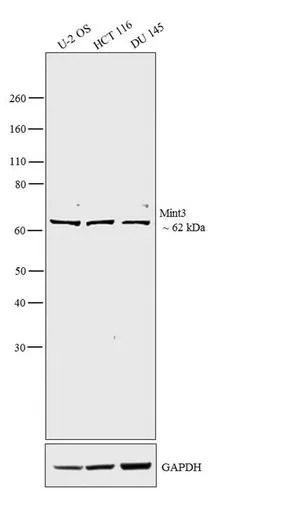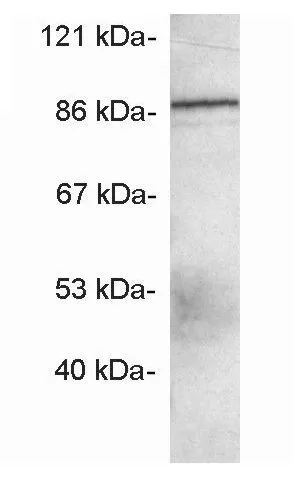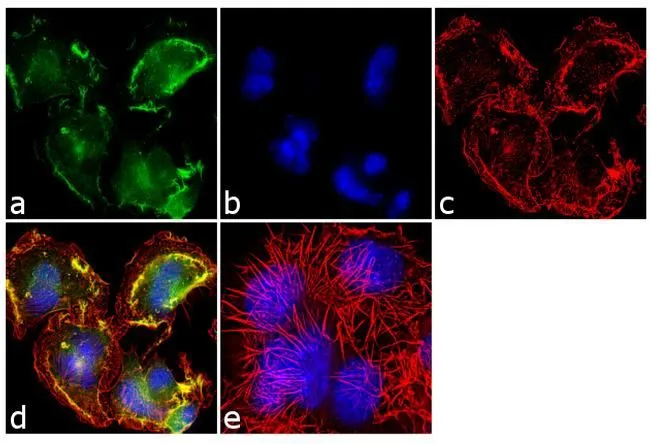
WB analysis of whole cell extracts (30 microg lysate) of U-2 OS (Lane 1), HCT 116 (Lane 2) and DU 145 (Lane 3) using GTX23450 Mint3 antibody. Dilution : 2 microg/ml
Mint3 antibody
GTX23450
ApplicationsFlow Cytometry, ImmunoFluorescence, Western Blot, ImmunoCytoChemistry, ImmunoHistoChemistry
Product group Antibodies
ReactivityHuman, Mouse, Primate, Rat
TargetApba3
Overview
- SupplierGeneTex
- Product NameMint3 antibody
- Delivery Days Customer9
- Application Supplier NoteWB: 2 microg/ml. ICC/IF: 2 microg/ml. FACS: 3-5 microg/106 cells. *Optimal dilutions/concentrations should be determined by the researcher.Not tested in other applications.
- ApplicationsFlow Cytometry, ImmunoFluorescence, Western Blot, ImmunoCytoChemistry, ImmunoHistoChemistry
- CertificationResearch Use Only
- ClonalityPolyclonal
- Concentration1 mg/ml
- ConjugateUnconjugated
- Gene ID57267
- Target nameApba3
- Target descriptionamyloid beta precursor protein binding family A member 3
- Target synonymsMint-3, X11gamma, lin-10, mint3, amyloid-beta A4 precursor protein-binding family A member 3, Mint 3, adapter protein X11gamma, amyloid beta (A4) precursor protein-binding, family A, member 3, neuron-specific X11L2 protein, neuronal munc18-1-interacting protein 3
- HostRabbit
- IsotypeIgG
- Protein IDO88888
- Protein NameAmyloid-beta A4 precursor protein-binding family A member 3
- Scientific DescriptionThe munc-18 interacting protein (Mint) protein family is a group of evolutionarily conserved adaptor proteins that function in membrane transport and organization. In mammals, there exist three mint isoforms, Mint1, 2, and 3. Although there is little amino acid sequence conservation in the amino-terminal half, the carboxy-terminal half of these proteins is highly conserved. Within this conserved portion there exists a phosphotyrosine-binding (PTB) and a PSD-95/DLG-A/ZO-1 (PDZ) domain, which function as protein interaction modules. Mint1 and 2 appear to be expressed exclusively in the brain and are found to bind to Munc18, an essential component of the synaptic vesicle fusion machinery. Mint3 is ubiquitously expressed in all tissues and is expressed at the lowest levels in the brain and testis. Studies show that mint3 does not interact with munc-18. Mint3 has been found to interact with the Alzheimers Disease-related amyloid precursor protein (APP) and does so through its PTB and PDZ domains. It has been suggested that mint3 links APP to other transport machinery components, thereby regulating it transport, endocytosis, and metabolism. Abnormal APP metabolism has been shown to be the cause of an early-onset type of Alzheimers disease.
- ReactivityHuman, Mouse, Primate, Rat
- Storage Instruction-20°C or -80°C,2°C to 8°C
- UNSPSC12352203


